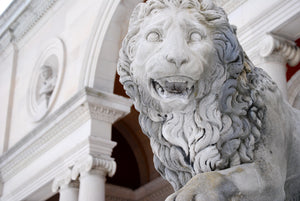Celebrating the Minorcan Heritage of St. Augustine: A Look at the Rich History and Culture of this Unique Community
Nov 01, 2024
As a descendant of the Minorcans, the earliest settlers of St. Augustine, Florida, I have always felt a deep connection to my heritage and the rich history of my ancestors. The story of the Minorcans is one of resilience, perseverance, and cultural preservation in the face of adversity. This article will delve into the history of the Minorcans and their impact on the founding and development of St. Augustine, as well as the challenges they faced and the ways in which their culture has been passed down through the generations.
St. Augustine, located in the northeastern region of Florida, is a city with a rich and diverse history. One important aspect of this history is the significant presence of Minorcan immigrants in the city. The Minorcans, who were originally from the Mediterranean island of Minorca (or Menorca), played a significant role in shaping the culture and identity of St. Augustine.
The first Minorcans arrived in St. Augustine in 1768 as indentured servants, recruited by the British to work in the colony's agricultural industry. These immigrants were attracted to the opportunity to work and live in the New World, and they were willing to accept the terms of indentured servitude in exchange for passage to America.
The Minorcans quickly adapted to life in the new colony and made significant contributions to the local economy. They were skilled farmers and were able to cultivate a wide range of crops, including vegetables, fruits, and grains. They also became skilled craftsmen, producing a variety of goods such as baskets, brooms, and chairs.
Despite their contributions to the colony, the Minorcans faced many challenges and obstacles. They were often treated unfairly and were not afforded the same rights and privileges as the British colonists. This led to a series of conflicts and tensions between the Minorcans and the British authorities.
In 1777, the Minorcans staged a revolt against the British, known as the "New Smyrna Revolt." This uprising was led by Joseph Purcell, a Minorcan who had become disillusioned with the treatment of his fellow immigrants. The revolt was ultimately unsuccessful, and many of the Minorcans were punished or imprisoned for their participation.
Despite this setback, the Minorcans continued to fight for their rights and for recognition as a distinct cultural group within the colony. They formed strong bonds with other marginalized groups, such as the African slaves, and worked together to advocate for their rights and improve their living conditions.
In the late 18th century, the Minorcans faced another challenge when the British colony of Florida was transferred to Spanish control. The Minorcans, who were used to the British system of governance, were unsure of how they would be treated under Spanish rule. However, they eventually found that the Spanish were more accepting of their cultural traditions and more willing to allow them to practice their Catholic faith.
The Minorcans began to thrive under Spanish rule and played a significant role in the development of St. Augustine. They established a community known as "New Town," which became an important center of commerce and culture. The Minorcans also built a number of churches, including the Shrine of Nuestra Señora de la Leche, which is still a popular tourist attraction today.
In the 19th century, the Minorcans continued to face challenges, as Florida became a territory of the United States. Many Minorcans were concerned about how they would be treated under American rule, and some even considered returning to Minorca. However, most of them ultimately decided to stay in St. Augustine and continue to contribute to the city's development.
Throughout the 20th century, the Minorcan community in St. Augustine continued to grow and thrive. They established a number of organizations and cultural institutions, such as the Minorcan Cultural Society, which promotes and preserves Minorcan traditions and history.
Today, the Minorcan community in St. Augustine is a vibrant and integral part of the city's culture and identity. Their contributions to the city's history and development have been recognized and celebrated, and their traditions and cultural practices continue to be an important part of the city's cultural landscape.
As with any immigrant group, the Minorcans brought with them their own unique cultural traditions and practices. These traditions have been passed down through the generations and have helped to shape the identity of the Minorcan community in St. Augustine.
One important aspect of Minorcan culture is the celebration of various holidays and festivals. The Minorcans have a strong tradition of celebrating Catholic holy days and feast days, such as the feast of St. Augustine, the patron saint of the city. They also celebrate a number of secular holidays, such as Minorcan Heritage Day, which is held annually in May to commemorate the arrival of the first Minorcans in St. Augustine.
Another important aspect of Minorcan culture is the cuisine. The Minorcans have a rich culinary tradition that has been influenced by their Mediterranean heritage. They are known for their use of flavorful ingredients, such as olive oil, garlic, and citrus, and for their use of seafood in many of their dishes. Some popular Minorcan dishes include "cabbage and noodles," a hearty stew made with cabbage, onions, and potatoes, and "datil pepper sauce," a spicy condiment made with datil peppers, which are native to the region.
In addition to their cultural traditions, the Minorcans have also made significant contributions to the economic and social development of St. Augustine. They have played a crucial role in the city's agriculture and fishing industries, and have also been active in local politics and civic organizations.
In recent years, the Minorcan community in St. Augustine has faced a number of challenges and changes. The city has experienced rapid growth and development, which has led to an influx of new residents and an increase in tourism. This has put pressure on the city's resources and has led to conflicts over issues such as housing and transportation.
Despite these challenges, the Minorcan community in St. Augustine remains strong and vibrant. They continue to celebrate their culture and traditions and to play a vital role in the city's development. The rich history of the Minorcans in St. Augustine is an important part of the city's identity and serves as a reminder of the enduring strength and resilience of this unique and diverse community.
The Minorcan community has played a significant role in the history and development of St. Augustine, Florida. From their arrival in the 18th century as indentured servants, to their contributions to the city's agriculture and fishing industries, the Minorcans have made a lasting impact on the city. Despite facing challenges and discrimination, they have persevered and have continued to celebrate their unique culture and traditions. To this day, the Minorcan community in St. Augustine remains a vibrant and integral part of the city's culture and identity.
P.S. Want to take your grilling to the next level? Check out our line of American craft bbq sauces. These high-quality products will add flavor and depth to your grilled dishes, taking them from ordinary to extraordinary. Don't miss out on this opportunity to elevate your BBQ game!

